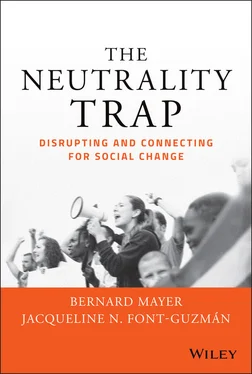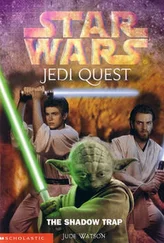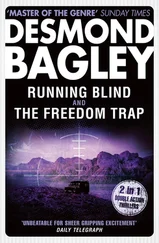Bernard S. Mayer - The Neutrality Trap
Здесь есть возможность читать онлайн «Bernard S. Mayer - The Neutrality Trap» — ознакомительный отрывок электронной книги совершенно бесплатно, а после прочтения отрывка купить полную версию. В некоторых случаях можно слушать аудио, скачать через торрент в формате fb2 и присутствует краткое содержание. Жанр: unrecognised, на английском языке. Описание произведения, (предисловие) а так же отзывы посетителей доступны на портале библиотеки ЛибКат.
- Название:The Neutrality Trap
- Автор:
- Жанр:
- Год:неизвестен
- ISBN:нет данных
- Рейтинг книги:3 / 5. Голосов: 1
-
Избранное:Добавить в избранное
- Отзывы:
-
Ваша оценка:
- 60
- 1
- 2
- 3
- 4
- 5
The Neutrality Trap: краткое содержание, описание и аннотация
Предлагаем к чтению аннотацию, описание, краткое содержание или предисловие (зависит от того, что написал сам автор книги «The Neutrality Trap»). Если вы не нашли необходимую информацию о книге — напишите в комментариях, мы постараемся отыскать её.
The Neutrality Trap,
The Neutrality Trap
The Neutrality Trap — читать онлайн ознакомительный отрывок
Ниже представлен текст книги, разбитый по страницам. Система сохранения места последней прочитанной страницы, позволяет с удобством читать онлайн бесплатно книгу «The Neutrality Trap», без необходимости каждый раз заново искать на чём Вы остановились. Поставьте закладку, и сможете в любой момент перейти на страницу, на которой закончили чтение.
Интервал:
Закладка:
At the opening of the Livonia Trial in 1964, Nelson Mandela discussed why after years of a disciplined commitment to nonviolence, he chose to participate in acts of sabotage against the apartheid regime of South Africa:
“All lawful modes of expressing opposition to this principle had been closed by legislation, and we were placed in a position in which we had either to accept a permanent state of inferiority, or to defy the Government. We chose to defy the Government. We first broke the law in a way which avoided any recourse to violence; when this form was legislated against, and when the Government resorted to a show of force to crush opposition to its policies, only then did we decide to answer violence with violence.”
(Mandela, Statement at the opening of his trial on charges of sabotage, Supreme Court of South Africa, 1964)
Mandela never disavowed this decision, albeit one he was very loath to make. Whether this was the wisest or most effective approach remains an interesting question. The group that engaged in sabotage (Umkhonto—an offshoot of the ANC) was quickly broken up, and these actions led to the long imprisonment of Mandela and his associates. Directly, it did little to disrupt the apartheid system. But 27 years later, Mandela emerged from imprisonment as a widely respected leader who was able to negotiate an end to apartheid and take the critical initial steps to building a new society. His power was in part derived from the widespread recognition that he was perhaps the only one with the credibility to enter into an agreement that would not be immediately rejected or provoke mass outbreaks of violence.
Recognizing that the power of nonviolence lies to some extent in the alternative it provides to a more violent confrontation does not mean that proponents of nonviolence are hypocritical. Effective movements for social change, as noted above, are not pristine or rigidly consistent.
Resolution, Engagement, and Disruption
Social movements inevitably face difficult strategic decisions about how to interface with the people they are hoping to influence and the systems that they want to change. Activists must choose whether to focus on disrupting systems, engaging with those whose beliefs and behaviors they oppose, or looking for potential areas of agreements that may be steps, even small ones, on the road to change. Whatever the immediate focus, over time all three approaches—disruption, engagement, and resolution—are necessary elements to the change process. An element of each is almost always present no matter what fundamental strategy a movement or group has adopted.
As conflict interveners, we often think about resolution as the be‐all and end‐all goal and consider constructive engagement as a positive step along the road to resolution. We tend to view disruption as a problem to overcome through engagement and resolution. However, in the search for social change we may have it backward. Resolution efforts are often most important as steps along a path that leads to system disruption. The civil rights movement, for example, was built on incremental changes, such as the integration of lunch counters and bus systems, but each of these contributed to the development of a network of diverse relationships that facilitated the expansion of the effort to change more fundamental elements in the system such as the distribution of political power. Resolution of deeply rooted conflicts will not occur without disruption.
Genuine engagement most often builds on a foundation of disruption and at the same time requires an openness to identifying areas of agreement. On the other hand, for disruption to be effective it must also open the door to engagement and resolution. Even if the goal of disruption is to dismantle a system, such as colonialism, engagement is essential. Effective movements respect the interdependence as well as the tension between these three strategic goals.
Mohandas Gandhi and the Salt March
Mohandas Gandhi was a master of disruption. One of the most important events in the struggle for Indian independence from the British Empire was the Salt March of 1930 ( History.comEditors 2020). The Salt March was undertaken to protest the repressive and racist policy restricting who could manufacture or collect salt, but it was also an all‐encompassing protest against colonialism. Thousands of Indians joined with Gandhi on a 240‐mile march to the Arabian Sea where in defiance of the law they collected salt from tidal deposits. Gandhi was one of over 60,000 people who were arrested. This action exposed the viciousness and racism of British imperialism and led to widespread condemnation. Disruption occurred.
But what happened after Gandhi was released from prison about 7 months later (in January 1931)? Gandhi met with Lord Irwin, the Viceroy of India, and agreed to call off his nonviolent campaign in exchange for being provided an “equal” negotiating role at a conference on the future of India to be held in London later that year. The conference did not produce any significant agreements, but it established Gandhi and more importantly the movement that he led as an inescapable force that could not be ignored. More disruption followed (civil disobedience, repeated arrests, hunger strikes, mass demonstrations). More engagement and negotiations occurred as well. India achieved independence in 1947, but the struggle against the continued effects of colonialism, the caste system, and racism continue.
Disrupting Systems of Oppression
Challenging systems that perpetuate oppression can be overwhelming, especially for those who bear the brunt of the oppression and may feel simultaneously responsible for advancing change and disempowered—a dilemma that Emily Martin (1994, 122) has called “empowered powerlessness.” Where to even begin? And once we disrupt the system, what is next? How do we move from awareness to disruption and then to change?
Recognizing the importance of disruption is an important first step in refocusing from system maintenance to social change. Disruptions can be overt and group based, such as organizing social movements, unionizing, or taking to the streets to demand change. Other approaches are more individual, such as calling in someone when they engage in a microaggression (an exchange that denigrates and insults a specific person or group (Sue 2010, 5)), kneeling for a national anthem, writing an op‐ed, or raising concerns about implicit bias with colleagues or managers.
Disruption is successful when it calls attention to routinized acts of violence and oppression and causes systems to reorganize in a way that limits or eliminates these acts. Sometimes when we challenge everyday microaggressions, we interrupt the normalization of the assumptions, prejudices, and injustices that enable such aggressions and, in doing so, we may create openings for dialogue where we thought none were possible (Cohen and Strand 2021).
During the summer of 2019, I (Jackie) joined Puerto Ricans who, for 14 days, took to the streets with a self‐organized movement that ousted Ricardo (Ricky) Rosselló, the governor of Puerto Rico. Rosselló announced his resignation on July 24, 2019, one day after close to a million people (a third of Puerto Rico's population) shut down the island by occupying the main expressway in San Juan and demanded his resignation.
The tipping point for this insurrection was the publication of 889 pages of texts from a messaging app administered by Rosselló. The chat included his closest advisers, a lobbyist, and cabinet members—all 12 of whom were men. The chat contained expletive‐laced attacks on the LGBTQIA+ community, women, obese individuals, the 4,645 people who died during Hurricane María, political opponents, members of the governor's own political party, journalists, and the poor. Rosselló became a symbol of the corruption, inequity, and colonial oppression that has plagued Puerto Rico for centuries. This protest was a manifestation of a conflict rooted in over 500 years of colonization, embedded in Puerto Rico's complex interactions with the United States, and wrapped in the island's national identity and cultural values.
Читать дальшеИнтервал:
Закладка:
Похожие книги на «The Neutrality Trap»
Представляем Вашему вниманию похожие книги на «The Neutrality Trap» списком для выбора. Мы отобрали схожую по названию и смыслу литературу в надежде предоставить читателям больше вариантов отыскать новые, интересные, ещё непрочитанные произведения.
Обсуждение, отзывы о книге «The Neutrality Trap» и просто собственные мнения читателей. Оставьте ваши комментарии, напишите, что Вы думаете о произведении, его смысле или главных героях. Укажите что конкретно понравилось, а что нет, и почему Вы так считаете.












